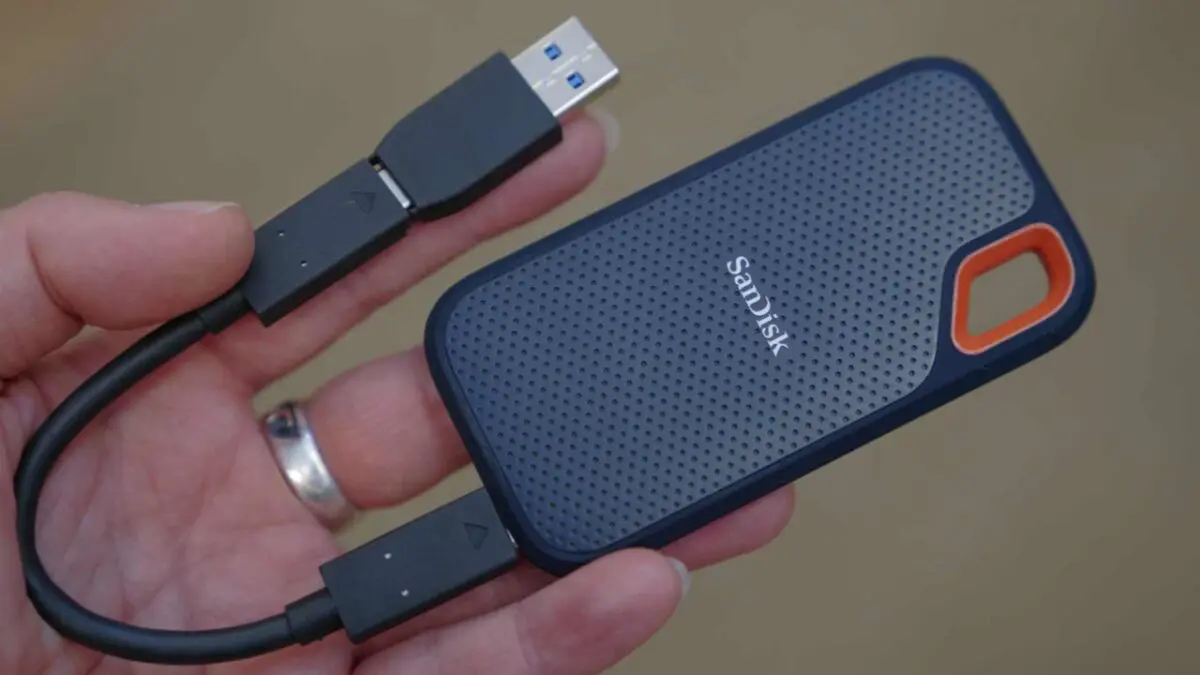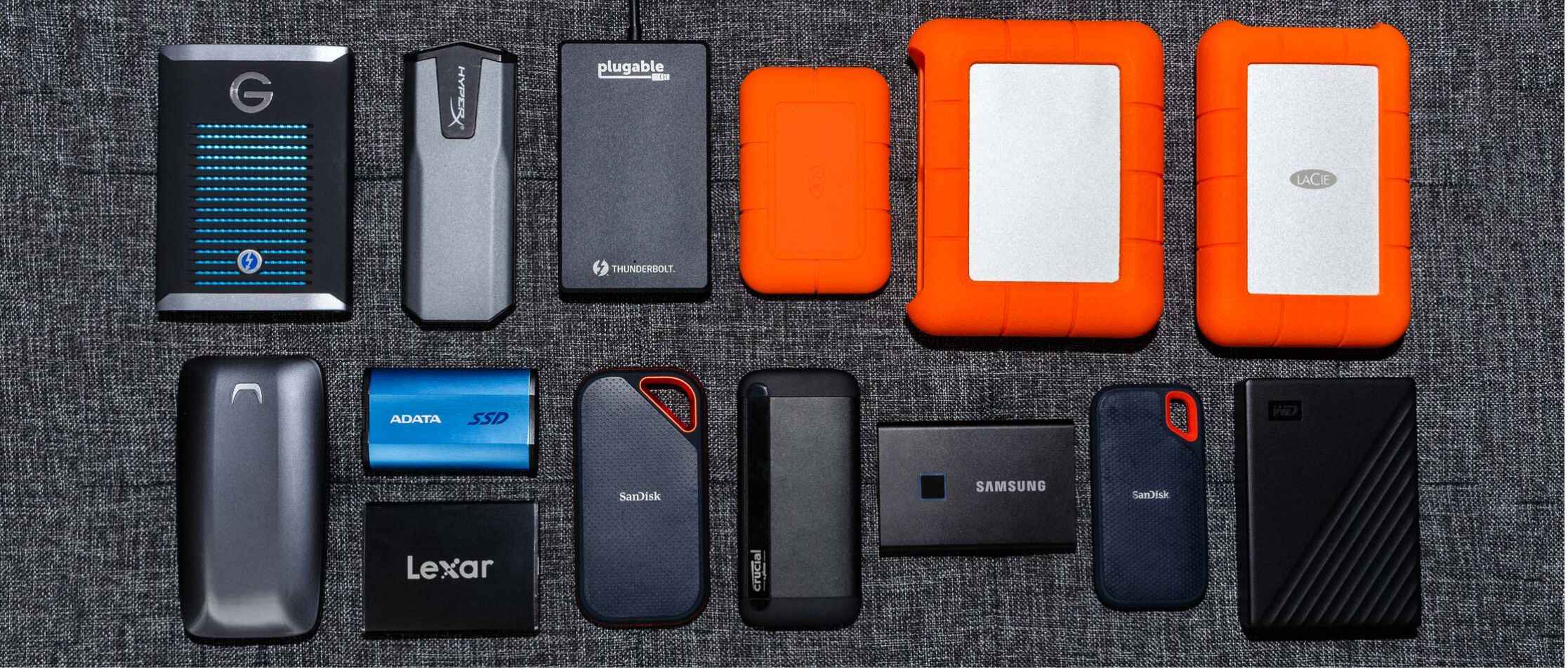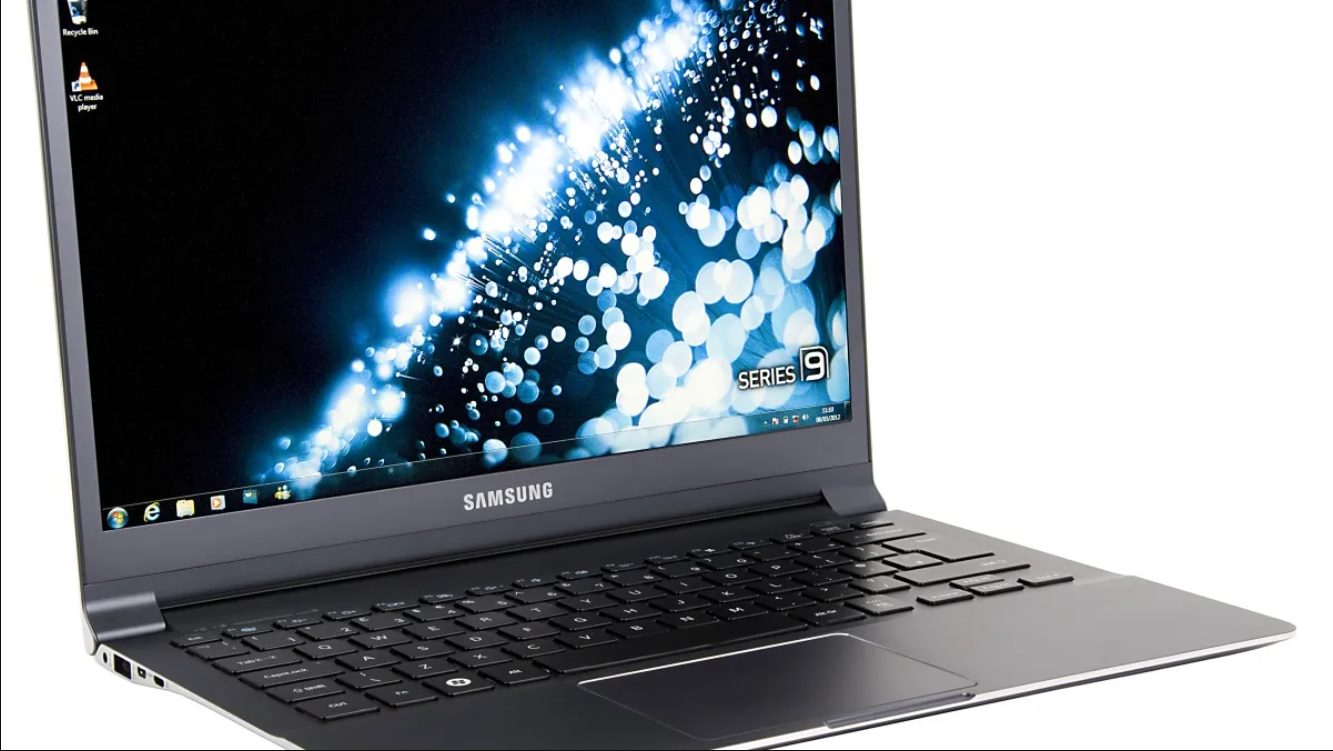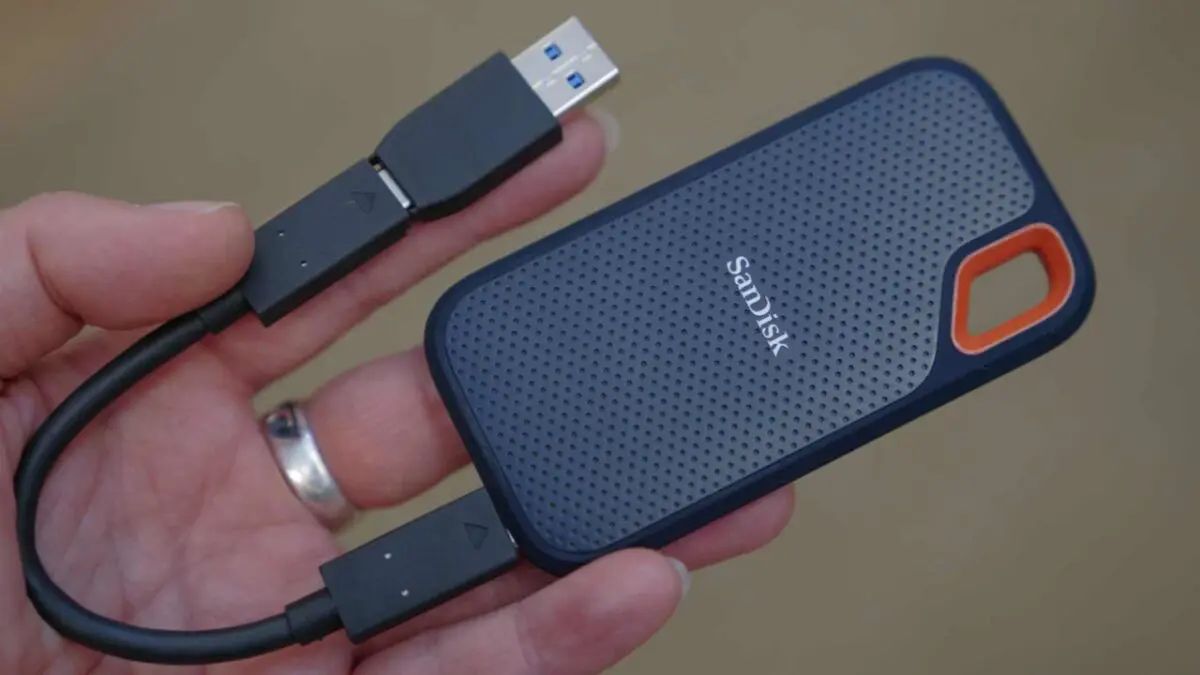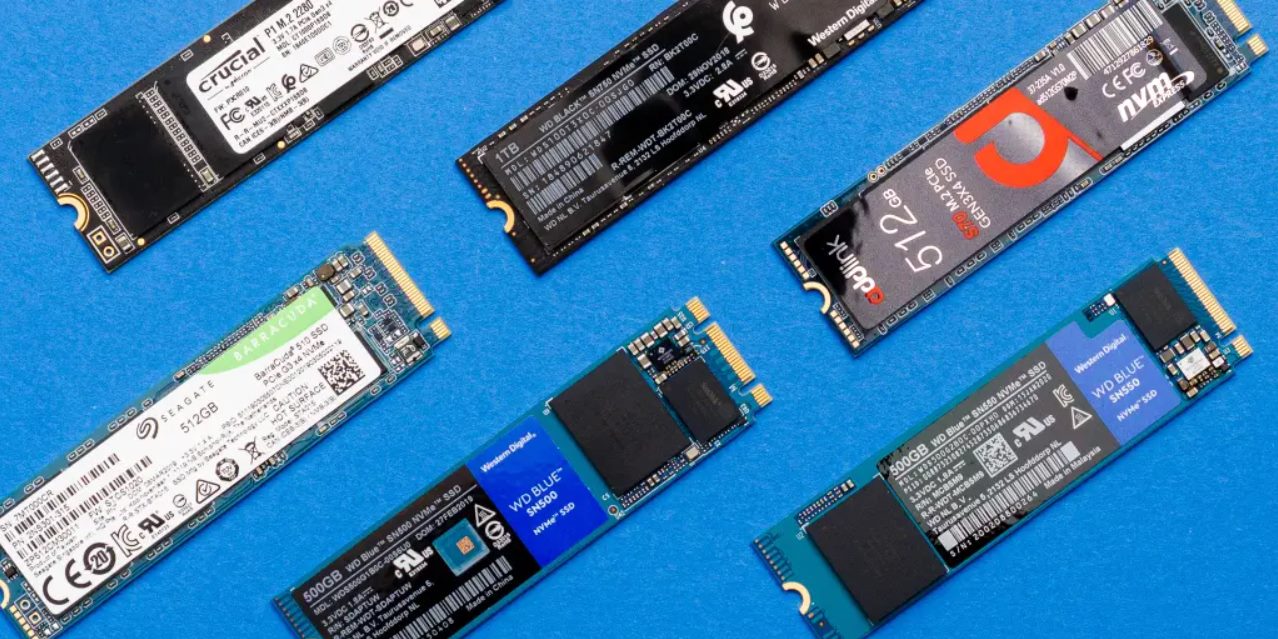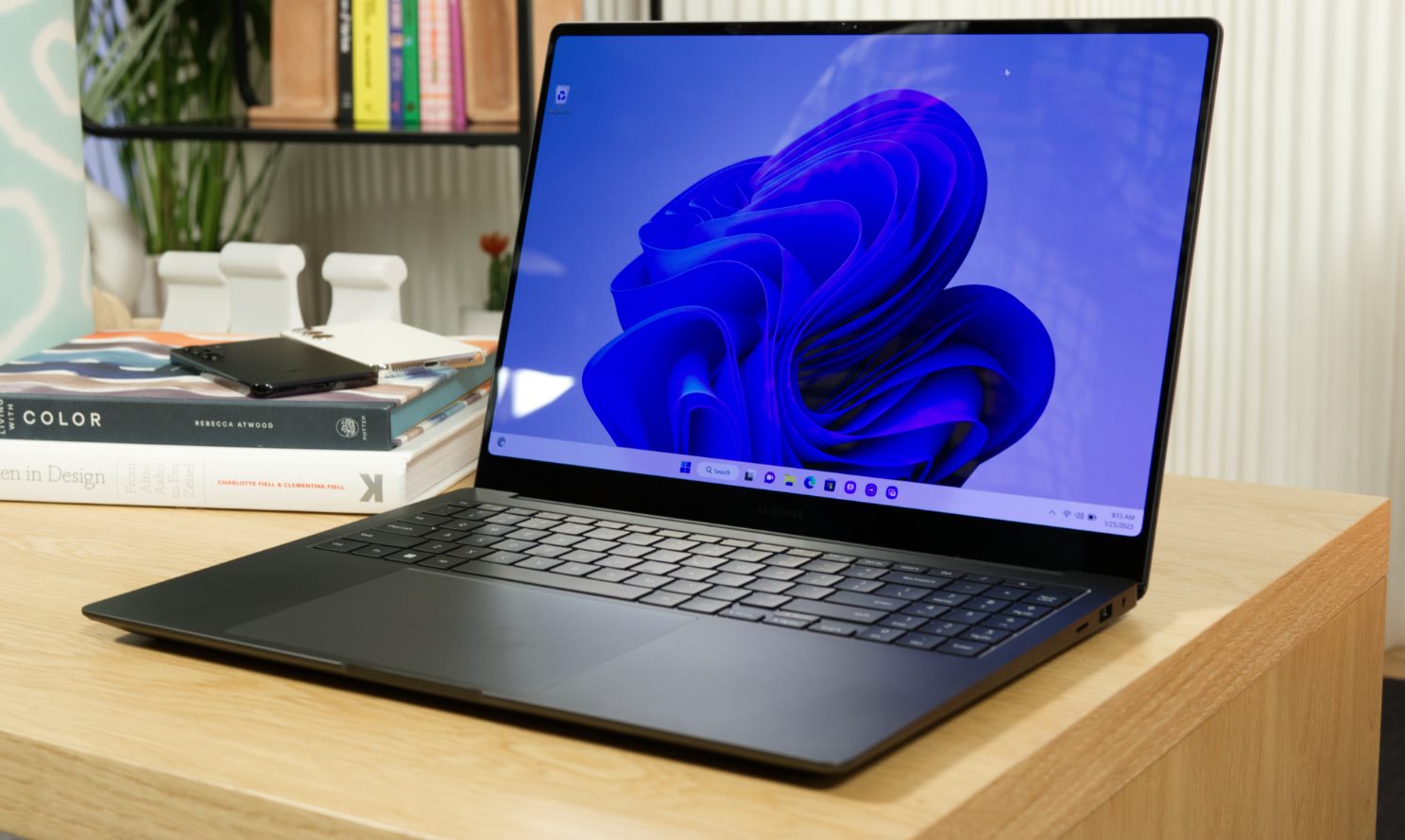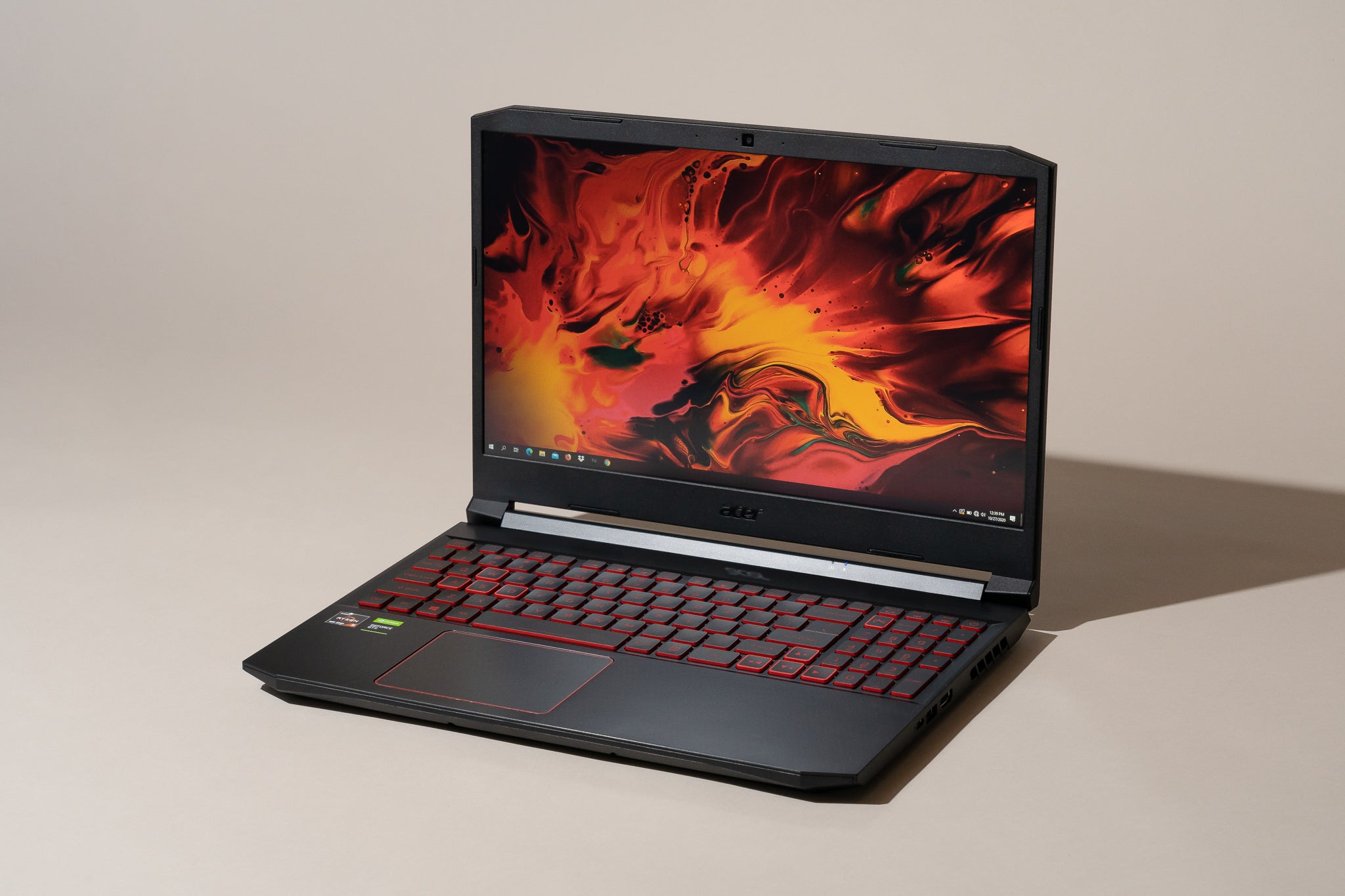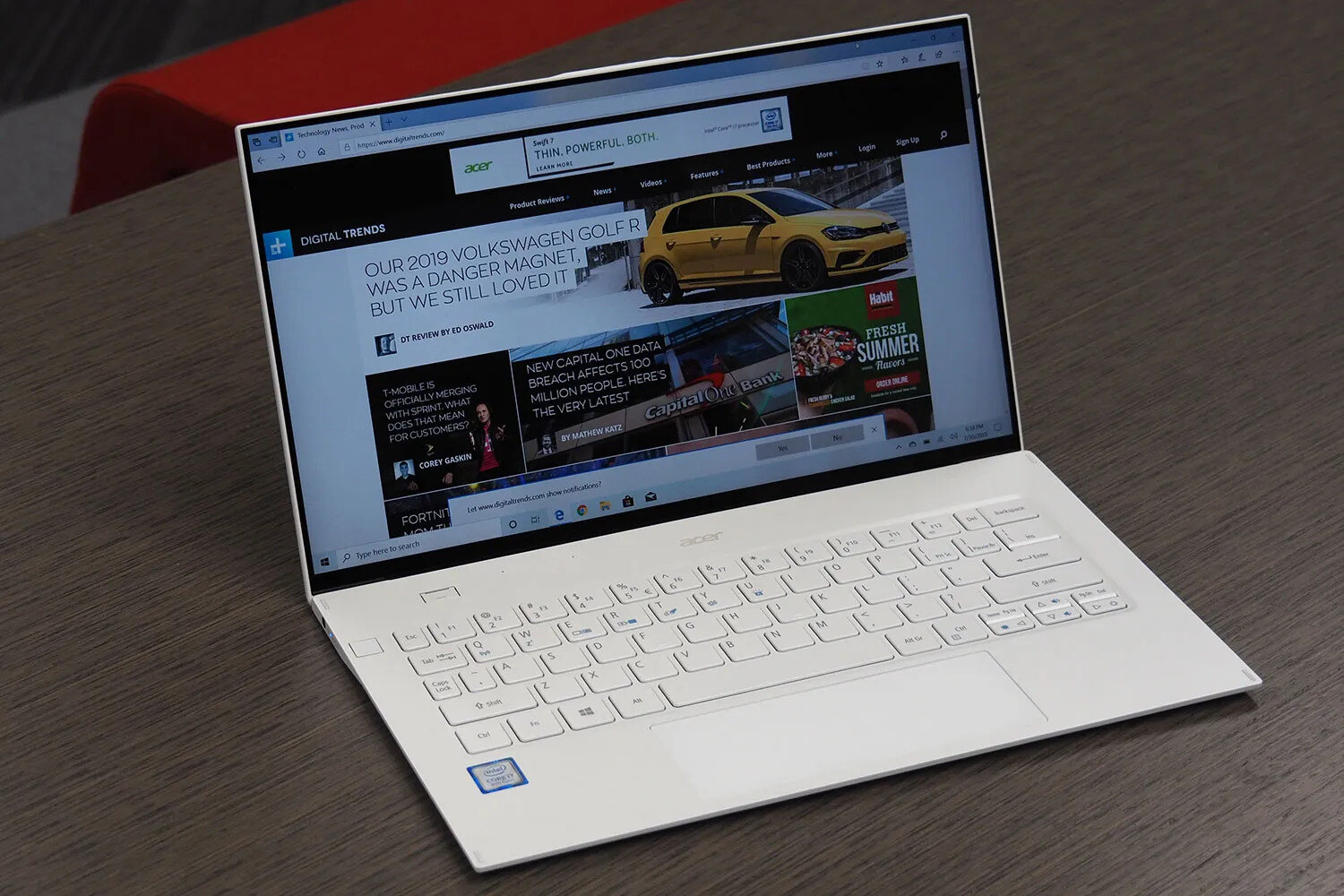Introduction
Portable solid-state drives (SSDs) have become increasingly popular in recent years due to their compact size, fast performance, and reliable storage capabilities. These portable storage devices offer a convenient way to store and transfer data, whether you are a professional on-the-go, a student needing extra storage for assignments, or a casual user looking to back up important files.
However, one question that often arises when considering a portable SSD is how long it will last. Since these drives have a limited lifespan, it is essential to understand the factors that can affect their longevity. By understanding these factors, you can make more informed decisions when purchasing a portable SSD and take steps to ensure its optimal performance and longevity.
In this article, we will explore the various factors that can impact the lifespan of a portable SSD. We will also discuss the signs that indicate a portable SSD is nearing the end of its lifespan. Understanding these factors can help you make informed decisions about your storage needs and give you peace of mind when using a portable SSD.
What is a Portable SSD?
A portable SSD, short for solid-state drive, is a compact and lightweight storage device that uses NAND flash memory to store data. Unlike traditional hard disk drives (HDDs), which use spinning magnetic platters to store data, portable SSDs have no moving parts. This lack of moving parts contributes to their durability, faster data transfer speeds, and better resistance to physical shock and vibration.
Portable SSDs come in various storage capacities, ranging from a few hundred gigabytes to several terabytes. They connect to a computer or other devices using a USB or Thunderbolt interface, making them compatible with a wide range of devices, including laptops, desktops, and gaming consoles.
One of the key advantages of portable SSDs is their speed. Compared to traditional HDDs, which rely on mechanical parts to read and write data, portable SSDs offer significantly faster data transfer speeds. This means you can transfer large files, such as photos, videos, and documents, much more quickly, saving you valuable time.
Another benefit of portable SSDs is their reliability. Since they have no moving parts, there is less risk of mechanical failure, making them more resistant to physical shocks, drops, and vibrations. This durability is especially important for individuals who frequently travel or work in environments where their storage devices may be subjected to rough handling.
Additionally, portable SSDs are smaller and lighter than traditional HDDs, making them highly portable and convenient to carry around. Whether you need to bring your work files with you on a business trip or want to take your media library on the go, portable SSDs provide a compact and efficient storage solution.
In summary, a portable SSD is a compact and durable storage device that utilizes NAND flash memory to store data. With their fast data transfer speeds, reliability, and portability, portable SSDs offer an excellent choice for individuals looking for secure and convenient storage solutions.
Factors that Affect the Lifespan of a Portable SSD
Several factors can influence the lifespan of a portable SSD. Understanding these factors can help you make an informed decision when purchasing a portable SSD and ensure that you take proper care of it to maximize its longevity. Here are some key factors to consider:
- NAND Flash Type: The type of NAND flash memory used in the portable SSD plays a significant role in its lifespan. Single-level cell (SLC) NAND has the longest lifespan but is more expensive. Multi-level cell (MLC) and triple-level cell (TLC) NAND have shorter lifespans but are more affordable. The lifespan of the NAND flash is determined by the number of program and erase cycles it can endure.
- Write Endurance: Write endurance refers to the number of times you can write data to the SSD before it starts to degrade. Portable SSDs with higher write endurance are typically more durable and have longer lifespans. It is important to consider your usage patterns and select an SSD with sufficient write endurance for your needs.
- Controller Technology: The controller of a portable SSD manages the data transfer between the computer and the NAND flash memory. A high-quality controller can improve the SSD’s reliability and lifespan. Look for SSDs that use reputable controller technologies for optimal performance and longevity.
- TRIM Support: TRIM is a command that allows the operating system to inform the SSD which data blocks are no longer in use. This helps the SSD to efficiently manage its storage and maintain optimal performance. SSDs with TRIM support tend to have longer lifespans as they can better manage the wear and tear of the NAND flash memory.
- Environmental Factors: Environmental conditions, such as temperature, humidity, and exposure to dust or moisture, can affect the lifespan of a portable SSD. Extreme temperatures, especially high heat, can degrade the performance and longevity of the SSD. It is important to store and use the SSD within the recommended temperature range.
- Usage Patterns: The frequency and intensity of data writing and erasing can impact the lifespan of an SSD. Heavy usage, such as frequent large file transfers or continuous video editing, can shorten the SSD’s lifespan. It is advisable to avoid excessive write operations if you want to prolong the lifespan of your portable SSD.
- Quality and Brand Reputation: The quality of the components and the reputation of the brand can also influence the lifespan of a portable SSD. Established brands often have a track record of producing reliable and long-lasting storage devices. Researching customer reviews and choosing SSDs from reputable manufacturers can help ensure better reliability and durability.
By considering these factors and taking appropriate care of your portable SSD, such as avoiding physical damage, protecting it from extreme temperatures, and regularly updating firmware, you can maximize its lifespan and enjoy reliable and fast storage for years to come.
NAND Flash Type
The type of NAND flash memory used in a portable SSD is a crucial factor that affects its lifespan. There are three main types of NAND flash memory: single-level cell (SLC), multi-level cell (MLC), and triple-level cell (TLC).
SLC NAND flash memory offers the longest lifespan among the three types. It stores one bit of data per memory cell, which results in better endurance and reliability. SLC SSDs are designed for high-performance applications and are commonly used in industrial and enterprise settings. However, they are more expensive and offer lower storage capacities compared to MLC or TLC SSDs.
MLC NAND flash memory stores multiple bits, usually two, of data per memory cell. It offers a balance between cost, performance, and lifespan. MLC SSDs are widely used in consumer-grade portable SSDs and provide satisfactory endurance for everyday use. They offer a good combination of affordability, capacity, and performance.
TLC NAND flash memory stores three bits of data per memory cell, making it the most affordable option. TLC SSDs are commonly found in consumer-grade portable SSDs and offer higher storage capacities at a lower price point. However, TLC NAND has a shorter lifespan compared to SLC or MLC NAND due to the increased density of data stored in each memory cell.
When considering a portable SSD, it is important to evaluate your storage needs and usage patterns to determine the appropriate NAND flash type. If you require high durability and extended lifespan, an SLC SSD may be the best choice, albeit at a higher cost. For most consumer applications, MLC or TLC SSDs offer a good balance between price, performance, and longevity.
It is worth noting that advancements in NAND flash technology have led to improvements in the endurance and reliability of MLC and TLC SSDs. Manufacturers employ various techniques such as wear-leveling algorithms and error correction codes to mitigate the impact of repeated write operations on the NAND flash memory. These techniques help to extend the lifespan of SSDs and ensure reliable performance over time.
In summary, the type of NAND flash memory used in a portable SSD plays a significant role in its lifespan. SLC NAND offers the longest lifespan at a higher cost, while MLC and TLC NAND offer a balance between cost, capacity, and performance. Consider your storage needs and usage patterns to choose the appropriate NAND flash type that meets your requirements.
Write Endurance
Write endurance is a critical factor that affects the lifespan of a portable SSD. It refers to the number of times you can write data to the SSD before it starts to degrade. Each NAND flash memory cell can only endure a limited number of program and erase cycles before it becomes unreliable.
The write endurance of a portable SSD is typically specified by the manufacturer and is measured in total bytes or terabytes written (TBW). For example, if an SSD has a write endurance of 300TBW, it means you can write a total of 300 terabytes of data to the drive before it reaches its specified lifespan.
It’s important to consider your usage patterns when evaluating write endurance. If you regularly perform heavy write operations, such as editing large video files or running frequent data-intensive tasks, it can put more strain on the SSD’s write endurance. In contrast, if you mainly use the SSD for occasional file transfers and everyday tasks, the write endurance may be less of a concern.
Fortunately, modern SSDs employ various techniques to prolong their lifespan and improve write endurance. One such technique is wear leveling, where the controller evenly distributes write operations across all the memory cells. This helps prevent certain cells from wearing out faster than others, ensuring more uniform usage of the NAND flash memory.
Another technique used is over-provisioning, where a portion of the SSD’s capacity is reserved as spare memory. This excess capacity is used to balance out any uneven wear on the NAND flash cells and improves the overall lifespan of the drive. The amount of over-provisioning can vary by manufacturer and SSD model.
It is important to note that while SSDs have limited write endurance, most consumer-grade SSDs are designed to exceed the average usage requirements of typical users. The actual lifespan of an SSD can vary based on various factors, including write patterns, usage intensity, and the overall quality of the SSD.
When selecting a portable SSD, it is advisable to choose one with a write endurance rating that aligns with your intended usage. If you anticipate heavy usage or need the SSD for professional tasks, you may opt for an SSD with higher write endurance. However, for general consumer use, SSDs with moderate write endurance specifications are likely to offer an adequate lifespan.
In summary, write endurance is an important consideration when evaluating the lifespan of a portable SSD. Understanding your usage patterns and selecting an SSD with an appropriate write endurance rating can help ensure that the drive will meet your storage needs and provide reliable performance over an extended period.
Controller Technology
The controller of a portable SSD plays a crucial role in its performance, reliability, and overall lifespan. The controller is responsible for managing the data transfer between the computer and the NAND flash memory.
A high-quality controller can significantly enhance the SSD’s lifespan by optimizing read and write operations, improving error correction capabilities, and ensuring data integrity. In contrast, a subpar or outdated controller may result in decreased performance and a shorter lifespan.
Popular controller technologies used in portable SSDs include those developed by companies like Samsung, SandForce, and Marvell, among others. These controllers incorporate advanced algorithms and features to enhance the overall functionality of the SSD.
One of the key features to consider in a controller is its ability to distribute write operations evenly across the NAND flash memory cells. This feature, known as wear leveling, helps prevent specific cells from experiencing excessive wear and extends the overall lifespan of the portable SSD.
Furthermore, robust error correction capabilities are essential for maintaining data integrity. Modern controllers use sophisticated error correction codes (ECC) that can identify and correct any errors that may occur during data transfer or storage. This ensures that your data remains intact and reliable over time.
Additionally, the controller also plays a role in managing the performance of the portable SSD. A well-designed controller can optimize the read and write speeds, ensuring fast and consistent performance. Advanced features, such as dynamic caching and compression algorithms, can also be implemented in the controller to further enhance the overall performance of the SSD.
When choosing a portable SSD, it is advisable to consider the reputation and track record of the controller technology used. Established brands often employ reputable controller technologies that have been tested and proven to deliver reliable performance and a longer lifespan.
Keep in mind that controller technology is continuously evolving, with new advancements being made to improve SSD performance and durability. When purchasing a portable SSD, it is recommended to choose models with the latest controller technologies to take advantage of the most recent developments in the field.
In summary, the controller technology used in a portable SSD has a significant impact on its longevity. A high-quality controller can enhance wear leveling, error correction capabilities, and overall performance, resulting in a longer lifespan for the SSD. By selecting SSDs with reputable controller technologies, you can ensure that your portable storage device will provide reliable performance and durability.
TRIM Support
TRIM is a command that plays a crucial role in maintaining the performance and lifespan of a portable SSD. It allows the operating system to communicate with the SSD to inform it which data blocks are no longer in use. This enables the SSD to optimize its storage space by erasing and consolidating those blocks, ensuring faster data write speeds and prolonging the lifespan of the drive.
When data is deleted from an SSD, the file system marks the corresponding storage blocks as available for new data. However, without TRIM, the SSD still considers these blocks as occupied. Over time, this can lead to reduced performance and the SSD being occupied by unnecessary and outdated data.
By employing TRIM, the SSD can proactively reclaim and erase these unused blocks, making them available for new data. This optimization process not only improves the overall performance of the SSD but also contributes to its longevity.
However, it is worth noting that for TRIM to work effectively, both the operating system and the SSD need to support this feature. Most modern operating systems, such as Windows, macOS, and Linux, have built-in support for TRIM. Additionally, the SSD itself must also have TRIM support implemented in its firmware.
When purchasing a portable SSD, it is essential to ensure that it explicitly states TRIM support. This ensures that your SSD can take advantage of this important feature for long-term performance and durability. SSD manufacturers often list TRIM support in their specifications or product details.
It is important to note that enabling TRIM on your SSD requires proper configuration in your operating system. Most modern operating systems automatically enable TRIM when they detect an SSD. However, it is recommended to verify that TRIM is enabled and functioning correctly on your system.
In summary, TRIM support is a crucial feature that helps optimize the performance and lifespan of a portable SSD. By enabling the operating system and the SSD to communicate and reclaim unused storage blocks, TRIM enhances performance and ensures the long-term reliability of the SSD. Be sure to check for TRIM support when selecting a portable SSD and ensure it is properly configured on your system for optimal performance.
Environmental Factors
The environment in which a portable SSD operates can have a significant impact on its lifespan. Environmental factors such as temperature, humidity, dust, and moisture can affect the performance and longevity of the SSD.
One of the critical considerations is temperature. SSDs are sensitive to heat and extreme temperature fluctuations. High temperatures can degrade the performance and reliability of the NAND flash memory, shortening the lifespan of the SSD. On the other hand, extremely low temperatures can affect the responsiveness and overall operation of the device.
It is essential to store and use the portable SSD within the recommended temperature range provided by the manufacturer. Keeping the SSD in a cool and well-ventilated area can help prevent overheating and ensure optimal performance and longevity.
In addition to temperature, humidity levels should also be taken into account. High humidity can lead to condensation, which may pose a risk of water damage to the internal components of the SSD. It is advisable to store the SSD in a dry environment and avoid exposing it to excessive moisture.
Dust and other particles can also impact SSD performance. They can accumulate on the surface of the SSD, obstructing airflow and potentially causing overheating. Regular cleaning, using appropriate methods and materials, can help maintain optimal conditions and prevent dust-related issues.
Furthermore, physical shock and vibration can also affect the lifespan of a portable SSD. Dropping or mishandling the SSD can potentially damage the internal components, leading to data corruption or even complete failure. It is crucial to handle the SSD with care and use protective cases or sleeves to minimize the risk of physical damage.
Lastly, transportation and travel can expose the SSD to various environmental conditions. Extreme temperatures in vehicles or during air travel can impact the SSD’s performance and integrity. It is advisable to take precautions when traveling with a portable SSD, such as storing it in a protective case and avoiding exposure to extreme temperatures for prolonged periods.
In summary, environmental factors such as temperature, humidity, dust, and physical shock can significantly impact the lifespan of a portable SSD. It is important to store and use the SSD within the recommended temperature and humidity range, protect it from dust and moisture, and handle it with care to prevent physical damage. By maintaining an optimal environment for your portable SSD, you can ensure its longevity and reliability.
Usage Patterns
The usage patterns of a portable SSD can have a significant effect on its lifespan. How you use the SSD, the frequency and intensity of data writing and erasing, and the types of operations performed can all impact its longevity.
One of the primary considerations is the frequency of write operations. Every time you write data to the SSD, it puts stress on the NAND flash memory. Continuous and heavy write operations, such as regularly transferring large files or performing data-intensive tasks, can accelerate wear and reduce the lifespan of the SSD.
If you anticipate heavy usage or perform data-intensive tasks regularly, it may be beneficial to choose an SSD with higher write endurance. SSDs with higher write endurance ratings are designed to handle more write operations, making them better suited for demanding usage patterns.
In contrast, if your usage primarily involves occasional file transfers, web browsing, and everyday tasks, SSDs with moderate write endurance should provide a sufficient lifespan. It is important to align the SSD’s write endurance specification with your anticipated usage to ensure optimal performance and longevity.
Another aspect to consider is the balance between read and write operations. While SSDs excel in fast read speeds, excessive write operations can potentially degrade the performance and lifespan of the SSD over time. It is important to consider your usage patterns and assess whether they lean more towards read-heavy or write-heavy activities.
It is also worth noting the impact of file sizes on SSD performance and lifespan. Large files require more data to be written to the SSD, which can contribute to wear and reduce the overall lifespan. If possible, consider breaking down large files into smaller ones to minimize the strain on the SSD.
Furthermore, continuous usage without allowing the SSD to rest can also impact its lifespan. Giving the SSD breaks and allowing it to cool down can help prevent excessive heat buildup and extend its longevity. If the SSD is constantly in use, consider implementing regular breaks to allow it to cool down.
By being mindful of your usage patterns and making necessary adjustments, you can help prolong the lifespan of your portable SSD. Avoiding excessive write operations, maintaining a balance between read and write activities, managing file sizes efficiently, and allowing the SSD to rest are all steps that can contribute to its overall longevity.
In summary, the usage patterns of a portable SSD play a vital role in determining its lifespan. Heavy and continuous write operations can accelerate wear and reduce longevity, while an appropriate balance between read and write activities can help maintain optimal performance. By understanding your usage patterns and adjusting them accordingly, you can make the most of your portable SSD and ensure its durability over time.
Quality and Brand Reputation
The quality of a portable SSD and the reputation of the brand manufacturing it are essential factors that can impact its lifespan. Choosing an SSD from a reputable brand known for producing high-quality storage devices can significantly increase the likelihood of a longer-lasting and reliable product.
Established brands often invest in rigorous research and development, quality control processes, and extensive testing to ensure their SSDs meet the highest standards. Their experience in the market and positive customer feedback contribute to their reputation and trustworthiness.
High-quality portable SSDs are built with durable components and undergo stringent manufacturing processes to ensure they can withstand normal wear and tear, as well as potential environmental factors. Such SSDs are less likely to experience premature failures or performance degradation.
Moreover, reputable brands frequently provide better customer support and warranty coverage. In the event of any issues or malfunctions, their dedicated support teams can assist customers and provide appropriate solutions or replacements. This level of after-sales support can greatly contribute to the overall experience and longevity of the SSD.
It is also worth considering the track record of the brand in terms of firmware updates and support. Regular firmware updates can address any potential bugs, security vulnerabilities, or performance enhancements, ensuring that the SSD continues to operate optimally and reliably over time.
When selecting a portable SSD, it is advisable to research and read reviews about different brands and models. Look for customer feedback regarding the reliability, longevity, and overall satisfaction with the product. Additionally, consider the warranty period and the specific coverage provided by the brand.
While reputable brands often come with a higher price tag, investing in a quality portable SSD can be a wise decision. A well-made and reputable brand SSD is more likely to offer better performance, durability, and long-term reliability, ultimately resulting in a longer lifespan for the SSD.
In summary, the quality of a portable SSD and the reputation of the brand manufacturing it are important factors to consider when assessing its lifespan. Reputable brands with a proven track record of producing high-quality storage devices, good customer support, and regular firmware updates are more likely to offer SSDs with longer lifespans. Investing in a reputable brand can give you confidence in the reliability and durability of your portable SSD.
Signs of a Dying Portable SSD
While portable SSDs are known for their reliability and durability, like any electronic device, they can eventually reach the end of their lifespan. It is important to be aware of the signs that indicate a portable SSD is nearing its demise. Recognizing these signs can help you take appropriate action, such as backing up your data and seeking a replacement, to avoid potential data loss or disruption. Here are a few common indicators that your portable SSD may be dying:
- Slow Performance: If you notice a significant decrease in the read/write speeds of your portable SSD, it may be a sign that the drive is wearing out. Sluggish performance and longer loading times can indicate that the NAND flash memory is no longer functioning optimally.
- File Corruption: Frequent and unexplained file corruption can be a red flag for a dying SSD. If you experience data corruption or encounter sudden errors when accessing files stored on your portable SSD, it may be a symptom of deteriorating NAND flash memory or other internal issues.
- Frequent Disconnections: If your portable SSD frequently disconnects or becomes unresponsive while in use, it may be a sign of a failing connection or internal component failure. This could indicate that the SSD is approaching the end of its lifespan.
- Unusual Noises: SSDs are generally silent due to their lack of mechanical parts. However, if you hear strange noises like clicking, grinding, or buzzing coming from your portable SSD, it could indicate a mechanical failure, such as a failing motor or damaged components. This is a serious warning sign that the SSD may be dying.
- Inability to Be Recognized: If your computer or device consistently fails to recognize or detect your portable SSD, it could suggest a serious internal failure. This can occur due to damaged connectors, controller malfunctions, or NAND flash memory issues.
If you experience any of these signs, it is important to take immediate action. The first step is to backup any important data stored on the dying portable SSD to prevent potential data loss. Consider transferring your files to a new storage device or cloud storage solution.
Once your data is secure, it may be time to explore options for replacing your portable SSD. Reach out to the manufacturer or a reputable service provider for advice on possible solutions or to inquire about warranty coverage if applicable. It is always recommended to seek professional assistance when dealing with a failing portable SSD.
Remember, prevention is key. Regularly backing up your data, monitoring the health of your portable SSD, and being aware of the signs of a dying drive can help you proactively address any issues and minimize the risk of data loss.
In summary, slower performance, frequent file corruption, disconnecting issues, unusual noises, and failure to be recognized are common signs that indicate a portable SSD is nearing the end of its lifespan. Taking prompt action to back up your data and seek a replacement can help avoid potential data loss and disruption.
Slow Performance
One of the signs that a portable SSD may be dying is a noticeable decrease in its overall performance. If you notice that your SSD is becoming slower over time, it could indicate that the drive is reaching the end of its lifespan.
There are various factors that can contribute to slow performance in a dying portable SSD. One of the primary reasons is the degradation of the NAND flash memory, which is responsible for storing and retrieving data. As the SSD ages and experiences wear, the performance of the NAND flash memory can deteriorate, resulting in slower read and write speeds.
Additionally, increased fragmentation of data on the SSD can also contribute to slower performance. Over time, as files are added, modified, and deleted on the drive, data can become scattered across different memory cells. This fragmentation can lead to longer access times and reduced overall performance.
It is worth noting that even a dying SSD may still function, but it will likely exhibit noticeable delays compared to when it was new. Tasks such as file transfers, program loading, and system boot times may take significantly longer to complete.
If you observe slow performance on your portable SSD, it is essential to rule out other potential causes, such as software-related issues or system bottlenecks. You can try connecting the SSD to a different computer or using a different USB port to ensure that the performance issue is specifically related to the SSD itself.
If you confirm that the slow performance is indeed associated with the portable SSD, it is advisable to take appropriate action. Firstly, make sure that you have a backup of any important data stored on the SSD to prevent potential data loss.
To address the slow performance, you may consider optimizing the SSD. Many manufacturers provide SSD management tools that can help clean up and optimize the drive. These tools may have features such as TRIM support, which helps improve the overall performance and lifespan of the SSD by erasing unused data.
However, if your portable SSD continues to exhibit slow performance despite optimization attempts, it may be a sign that the drive is nearing the end of its lifespan. In such cases, it is advisable to start exploring options for a replacement.
In summary, slow performance is one of the signs of a dying portable SSD. If you notice a significant decrease in read and write speeds or experience overall sluggishness, it could indicate that the NAND flash memory is degrading. It is important to ensure that the slow performance is specifically related to the SSD and take appropriate actions, such as backing up data and considering a replacement, to prevent potential data loss and disruption.
File Corruption
Experiencing frequent file corruption is another sign that your portable SSD may be reaching the end of its lifespan. File corruption occurs when the data stored on the SSD becomes damaged or altered, resulting in data integrity issues and potentially rendering files unreadable or unusable.
There can be various reasons for file corruption in a dying SSD. One of the primary factors is the deterioration of the NAND flash memory. As the SSD ages, the individual memory cells that store data can become less reliable. This can lead to data errors, bit rot, or a complete loss of data integrity.
File corruption can also occur due to internal errors in the SSD’s controller or firmware. As the SSD nears the end of its lifespan, these internal components may start to degrade or malfunction, resulting in data corruption during the read or write process.
Furthermore, other external factors such as power spikes, sudden disconnections, or physical shocks can contribute to file corruption. SSDs are generally more resilient to these factors than traditional hard drives, but as they approach the end of their lifespan, their ability to withstand such events may decrease.
If you start noticing frequent file corruption on your portable SSD, it is important to take immediate action. First and foremost, ensure that you have a backup of all important data stored on the SSD to prevent permanent data loss.
File system errors can sometimes cause file corruption. Running a disk check or using built-in disk repair utilities on your operating system can help identify and fix any file system errors that may contribute to file corruption issues.
However, if the file corruption issues persist despite efforts to repair the file system or restore data from backups, it is a strong indication that the SSD may be failing. In such cases, it is recommended to consider replacing the portable SSD to prevent further data loss and ensure the integrity of your files.
Keep in mind that even with a dying SSD, some files may still remain intact and accessible. However, relying on a failing SSD for important data storage poses a significant risk, as the corruptions can worsen over time and potentially lead to complete data loss.
In summary, frequent file corruption is a sign of a dying portable SSD. Deterioration of the NAND flash memory, internal errors, external factors, and wearing down of the SSD’s components can contribute to file corruption issues. It is important to have backups of important data and take appropriate actions, such as running disk checks and considering a replacement, to prevent permanent data loss and ensure the integrity of your files.
Frequent Disconnections
Frequent disconnections of your portable SSD while in use can be a clear indication that the drive may be approaching the end of its lifespan. If you notice that your SSD frequently disconnects or becomes unresponsive, it is important to consider it as an early warning sign of potential failure.
There can be several underlying reasons for frequent disconnections in a dying portable SSD. One common reason is a failing connection between the SSD and the device it is connected to. This can be due to a loose USB cable or a damaged USB port. However, if you have ruled out these external factors, it is likely that the issue lies within the SSD itself.
Frequent disconnections can be an indicator of internal component failure within the SSD. As the drive ages and reaches the end of its lifespan, the internal components, such as the controller or NAND flash memory, may start to degrade. This can result in intermittent connectivity issues and signal disruptions, leading to frequent disconnections.
Another potential cause of frequent disconnections is physical damage to the SSD. Dropping the drive, exposing it to extreme temperatures, or subjecting it to physical shocks can damage the internal components and cause connectivity issues.
If you experience frequent disconnections with your portable SSD, there are a few steps you can take to troubleshoot the issue. Firstly, check the USB cable and ensure it is securely connected to both the SSD and the device. Try using a different USB cable or USB port to rule out any potential cable or port-related issues.
If the disconnections persist, it is advisable to test the SSD with a different computer or device to see if the issue is consistent across multiple systems. If the same problem occurs on different devices, it suggests an internal issue with the SSD itself.
If you determine that the frequent disconnections are specific to the SSD, it is wise to consider backing up any important data stored on the drive. This is crucial to prevent potential data loss that may occur if the SSD fails completely.
When faced with persistent disconnection issues, it is typically a sign that the portable SSD is deteriorating and nearing the end of its lifespan. In such cases, replacing the SSD is the recommended course of action to avoid any future data loss or disruption.
In summary, frequent disconnections of a portable SSD during use can be an indication that the drive is reaching the end of its lifespan. Potential causes include failing connections, internal component failure, or physical damage. It is important to rule out external factors, back up data, and consider replacing the SSD if the disconnection issues persist to mitigate the risk of data loss and ensure a stable storage solution.
Unusual Noises
Unusual noises emanating from your portable SSD can be a clear indicator that the drive is experiencing mechanical or internal issues. SSDs are typically silent due to their lack of moving parts, so any abnormal sounds should be taken as a warning sign that the drive may be failing.
There are different types of unusual noises that you may encounter from a dying portable SSD, including clicking, grinding, or buzzing sounds. These sounds often suggest mechanical failures within the drive or damage to its internal components.
Clicking noises can indicate a problem with the read/write heads or the actuator arm within the SSD. This could be caused by misalignment or damage to these components. Clicking sounds are generally a serious warning sign that the SSD may be failing and should be addressed immediately.
Grinding or buzzing sounds are usually associated with issues related to the motor or other moving parts within the SSD. These noises may suggest mechanical failures or damage that can prevent the drive from functioning properly. Ignoring these sounds can lead to permanent data loss or a complete SSD failure.
If you hear any unusual noises coming from your portable SSD, it is crucial to act swiftly. First, make sure to back up any important data stored on the drive as soon as possible to prevent potential data loss.
When experiencing unusual noises, it is recommended to disconnect the SSD from your computer or device to avoid further damage. Continuing to use a failing SSD can exacerbate the issue and potentially render the drive inoperable.
At this point, seeking professional assistance is advisable. Contact the manufacturer’s customer support or a reputable service provider. They can help evaluate the SSD and offer guidance on whether repairs are possible or if it is necessary to replace the drive.
It is important to note that unusual noises coming from an SSD should not be ignored or dismissed. These sounds indicate a serious problem that, if left unaddressed, can lead to irreparable damage and data loss.
In summary, any unusual noises originating from a portable SSD, such as clicking, grinding, or buzzing, are clear signs of mechanical or internal issues. These noises should be taken seriously, and immediate action should be taken to back up data and seek professional assistance. Ignoring unusual noises can lead to permanent data loss and render the SSD inoperable.
Inability to Be Recognized
If your portable SSD is consistently failing to be recognized or detected by your computer or device, it is a clear sign that something is amiss. When an SSD is not recognized, it means that the system is unable to establish a connection or communicate with the drive.
There are several potential reasons why a portable SSD may not be recognized. One possibility is a loose or faulty USB connection. Ensure that the USB cable is securely plugged into both the SSD and the USB port. You may also try using a different USB cable or port to rule out any connectivity issues.
If the problem persists even after checking the connections, it may indicate internal issues with the SSD itself. These issues can range from a failing controller or firmware to damaged NAND flash memory or other internal components.
Another possible cause is outdated or incompatible drivers on your computer or device. In such cases, updating the drivers or firmware may resolve the recognition issue.
However, if the portable SSD consistently fails to be recognized on different computers and devices, it suggests a more serious problem with the drive. This could be an indication of a failing SSD nearing the end of its lifespan.
If your portable SSD is not being recognized, it is crucial to take certain steps to ensure data safety. First, try connecting the SSD to a different computer or device to confirm if the issue is specific to one system. If it remains unrecognized across multiple systems, it is best to assume a possible hardware failure and take precautionary measures.
Make sure to back up any important data stored on the SSD as soon as possible. Data recovery may become increasingly challenging or even impossible if the SSD fails completely.
At this point, it is recommended to contact the manufacturer’s customer support or consult with a professional service provider. They can provide guidance on possible solutions or whether it is necessary to replace the portable SSD.
In summary, an inability to be recognized by your computer or device is a strong indicator of a problem with your portable SSD. Connectivity issues, outdated drivers, or internal failures can contribute to this problem. Taking appropriate actions such as checking connections, updating drivers, and seeking professional assistance can help diagnose and address the underlying issue, ensuring the safety of your data and determining the best course of action moving forward.
Conclusion
In conclusion, understanding the signs and factors that can affect the lifespan of a portable SSD is essential for making informed decisions and ensuring optimal performance and longevity. The lifespan of a portable SSD is influenced by factors such as the NAND flash type, write endurance, controller technology, TRIM support, environmental factors, usage patterns, and the quality and brand reputation of the SSD.
Recognizing the signs of a dying portable SSD, such as slow performance, frequent file corruption, frequent disconnections, unusual noises, and the inability to be recognized, is crucial for taking appropriate action to prevent potential data loss and ensure a reliable storage solution.
To maximize the lifespan of a portable SSD, it is important to store and use it within the recommended temperature and humidity range, protect it from dust and physical damage, avoid excessive write operations, and handle it with care. Regularly backing up important data and keeping firmware up to date are also key practices to ensure data integrity and minimize the risk of data loss.
When selecting a portable SSD, it is advisable to choose one with a reputable brand and high-quality components. Established brands often offer better support, warranty coverage, and firmware updates, allowing for a more reliable and longer-lasting storage solution.
While portable SSDs have a limited lifespan due to the wear and tear of the NAND flash memory, proper care, and choosing a reliable SSD can help extend its lifespan and provide reliable performance for your storage needs.
By understanding the factors influencing the lifespan of a portable SSD and being aware of the warning signs of a dying drive, you can make informed decisions, take proactive measures to protect your data, and ensure that your portable SSD serves you well for years to come.







